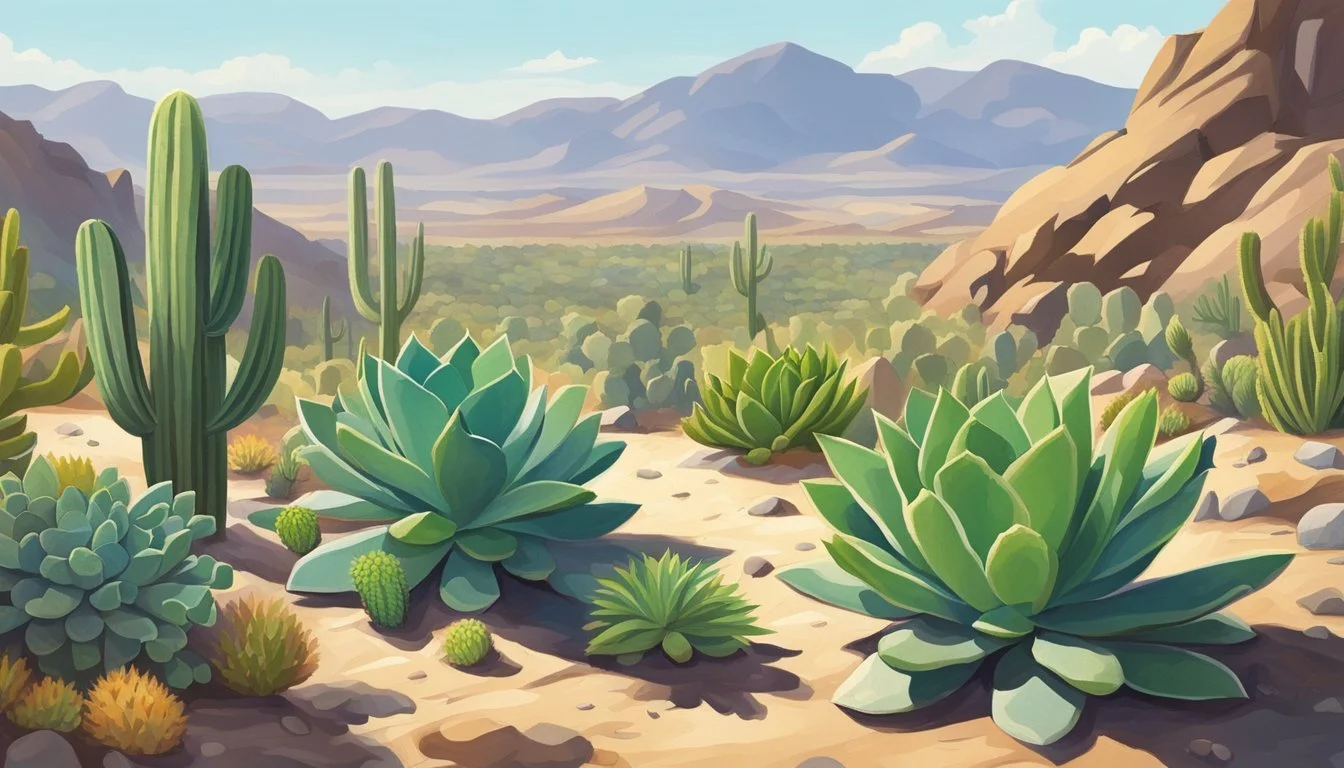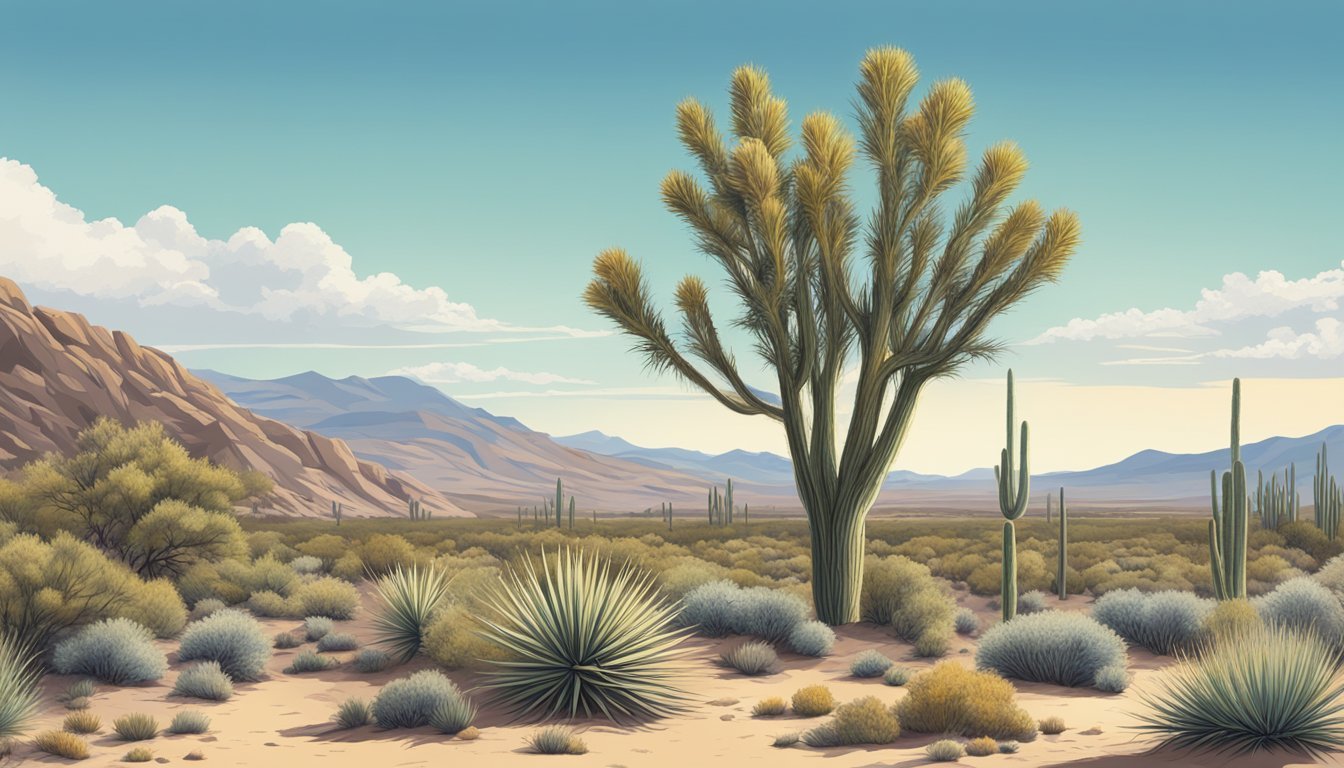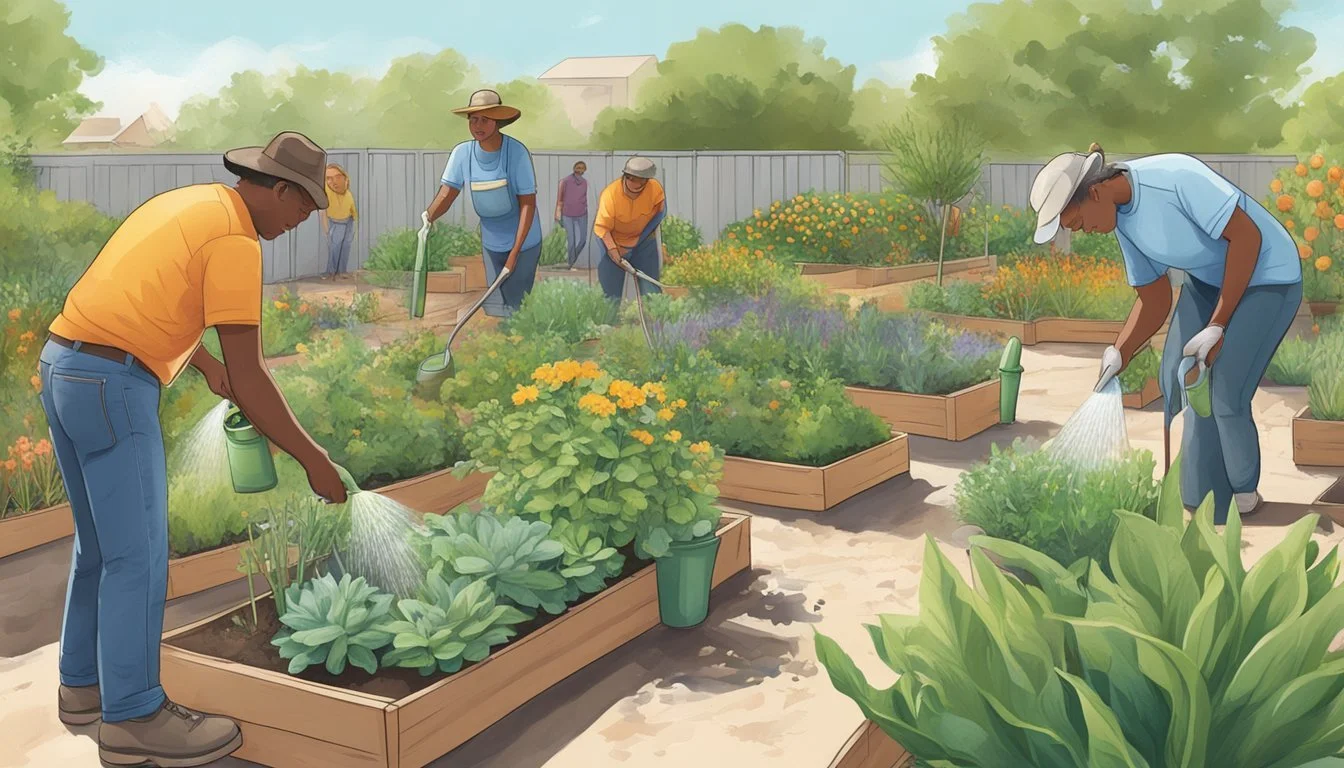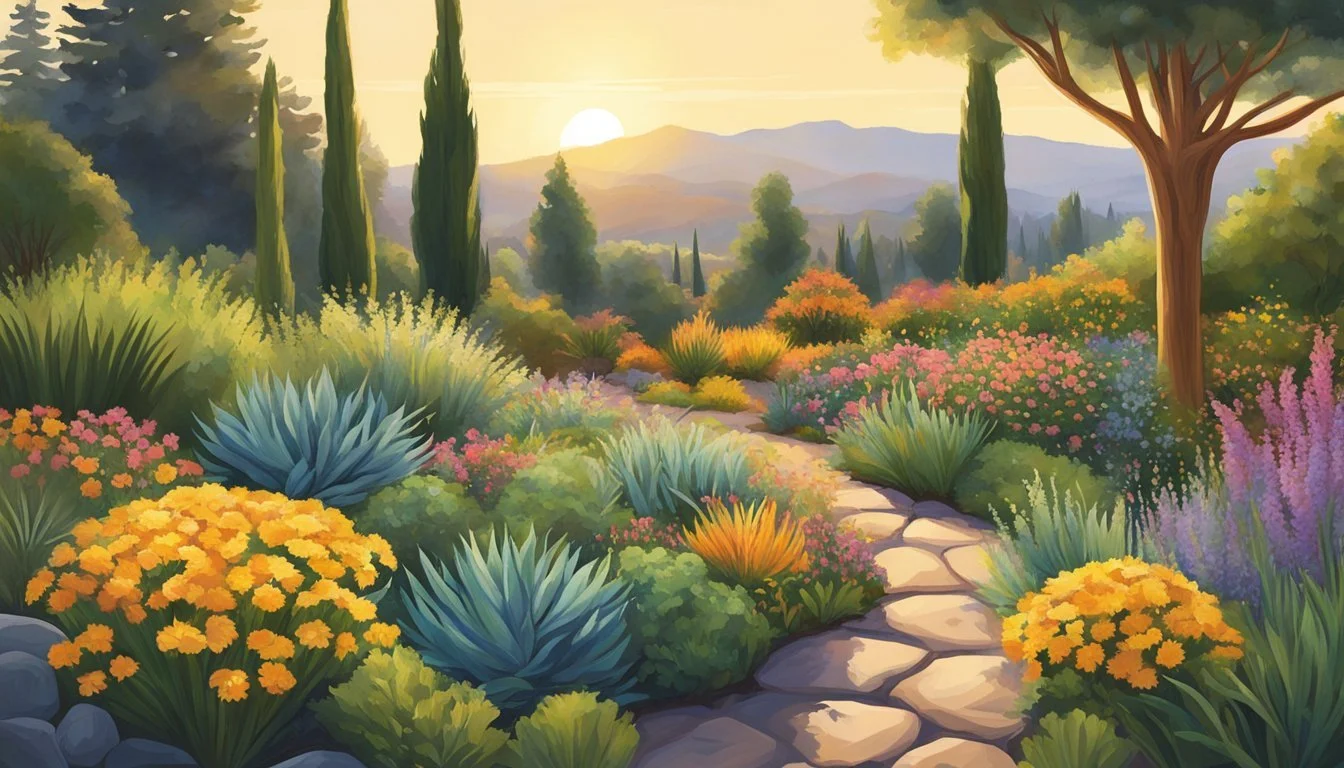Drought-Tolerant Plants in Washington
Thriving Flora for Arid Climates
Washington's diverse climate presents unique gardening challenges, particularly when it comes to selecting plants that can thrive with minimal water. Drought-tolerant plants offer an effective solution, allowing homeowners and landscapers to create verdant spaces that conserve water and withstand dry periods. These species are specifically adapted to survive with less moisture, making them an ideal choice for the state's water-wise gardens.
Incorporating drought-tolerant plants into landscaping not only addresses the practical concerns of water conservation but also contributes to the health of local ecosystems. A well-planned selection of trees, shrubs, and groundcover can reduce reliance on supplemental watering and help maintain soil stability, preventing erosion during drought conditions. With proper plant choices, Washingtonians can curate landscapes that are both resilient and environmentally responsible.
Choosing the right plants for a water-wise garden involves understanding the specific conditions of Washington's climate zones. From the low-growing groundcovers that blanket the earth to the towering drought-tolerant trees that provide shade and structure, options abound for creating an attractive and sustainable outdoor space. These hardy varieties stand as a testament to the beauty and durability of Washington's native and adapted flora.
Understanding Drought and Climate of Washington
In the Pacific Northwest, understanding the climate and its patterns is vital for recognizing how drought can affect the region's ecosystems and water resources.
Defining Drought and Its Impact
Drought is a prolonged period of abnormally low precipitation leading to a shortage of water. In Washington State, it can have significant impacts on agriculture, water supply, and natural landscapes. The signs of drought are often subtle at first—such as reduced streamflow or stressed vegetation—but can escalate to more severe consequences like water restrictions and crop failures.
Climate Characteristics of the Pacific Northwest
The climate of the Pacific Northwest is predominantly maritime, characterized by mild, wet winters and warm, dry summers. However, the region is susceptible to climate change, which can exacerbate drought conditions. Factors like increased temperatures and shifting precipitation patterns contribute to water scarcity in Washington during drier months. Understanding these climate characteristics is imperative for the development and management of drought-tolerant landscapes.
Essentials of Drought-Tolerant Landscaping
Drought-tolerant landscaping involves careful planning and implementation to create a garden that is both beautiful and water-efficient. Incorporating specific plants, soil strategies, and irrigation techniques, gardeners can cultivate a landscape resilient to water scarcity.
Planning Your Waterwise Garden
A waterwise garden begins with a detailed plan that maps out the area, taking into consideration the natural landscape and climatic conditions. It is crucial to assess the garden's exposure to sun and shade, wind patterns, and topography. Zoning the garden into areas based on plant water needs optimizes water usage and ensures that each plant receives appropriate care.
Soil Preparation and Improvement
Soil is the foundation of a drought-tolerant landscape. Improving soil health is essential and can be achieved by incorporating organic matter, such as compost, which enhances the soil's ability to retain moisture. Adding layers of mulch not only reduces water evaporation but also suppresses weed growth and moderates soil temperature.
Selecting Drought-Resistant Plants
When choosing drought-tolerant plants, select species that are well-suited to the local climate and soil conditions of Washington. Native plants often require less water and are more resistant to local pests and diseases. They should be grouped according to their water needs to maximize efficiency and support a low-water-use garden.
Irrigation Techniques for Conservation
Effective irrigation is vital in a drought-tolerant landscape. Utilizing irrigation systems such as drip irrigation can significantly reduce water use by directing water precisely to the plant roots, minimizing waste. Regular monitoring of soil moisture ensures that plants get water only when necessary, promoting deeper root growth and water conservation.
Plant Selection for Dry Conditions
Choosing the right plants for Washington's dry areas requires selecting species that can thrive with minimal water. Here, we present a curated list of trees, shrubs, native plants, and herbs well-suited to these conditions.
Popular Drought-Tolerant Trees and Shrubs
Trees: The Juniper species stands out as a resilient tree for dry climates. Its ability to conserve water makes it an excellent choice for Washington's less irrigated regions.
Shrubs: Among shrubs, Lavender is a favorite for its fragrant flowers and drought-resistant nature. Its silvery foliage adds a unique texture to garden landscapes.
Native Plants and Wildflowers
Native Plants: The Yucca plant is native to arid conditions and a stellar choice for dry Washington soils, thriving where other plants might struggle.
Wildflowers: They often require less maintenance and provide vital support for local wildlife, making them an eco-friendly and practical selection.
Herbs and Perennials That Thrive in Drought
Herbs: Rosemary is celebrated not only for its culinary uses but also for its hardiness in dry conditions. It's a choice herb that seldom disappoints in drought-prone gardens.
Perennials: With a range of varieties available, Sedum (stonecrop) presents itself as a perennial that endures and even flourishes with little water, offering both ground cover and vertical interest.
Caring for Your Drought-Resistant Garden
Creating a garden that thrives in dry conditions requires not only choosing the right plants but also implementing effective garden care strategies. These steps are crucial to ensure that a garden is resilient against drought, conserves water, and maintains healthy plant growth.
Effective Watering Strategies
Proper watering is essential for drought-tolerant gardens. Deep watering at less frequent intervals encourages plants to develop deep root systems, which makes them more capable of accessing water from deeper within the soil. Gardeners should provide supplemental water during extended dry periods to ensure that plants establish well and survive long-term dry spells. A garden may benefit from a one-inch application of water every week or two, depending on soil type and weather conditions.
Mulching and Soil Management
Mulch serves multiple pivotal roles in a drought-resistant garden. It helps retain soil moisture, reduces evaporation, and suppresses weed growth. A layer of mulch about two to three inches thick is generally recommended. Organic mulches such as straw or wood chips not only conserve water but also improve soil quality as they decompose. In terms of soil management, incorporating organic matter can enhance soil structure, which improves its ability to hold water and support a healthy root system.
Pruning and Maintenance of Drought-Tolerant Species
Regular maintenance, including pruning, can increase the resilience of drought-tolerant plants. Removing dead or diseased branches promotes air circulation and reduces the plant's water demands. Strategic pruning, done in the right season for each plant species, can also stimulate root growth, further enhancing drought tolerance. Always ensure that the garden's maintenance plan aligns with the specific needs of each plant species to optimize their innate drought-resistant qualities.
By focusing on these crucial aspects—watering deeply but infrequently, utilizing mulch for moisture retention, and maintaining plants through pruning—gardeners can cultivate a garden that not only conserves water but also thrives in challenging dry environments.
Supporting Biodiversity With Native Plantings
Incorporating native plants into landscapes is a strategic approach to enhance biodiversity. These plantings provide essential services to wildlife, such as habitat and food, and play a critical role in conservation efforts.
Attracting Pollinators and Wildlife
Native plants are the foundation for attracting a variety of pollinators and wildlife. Specific species to consider for Washington landscapes include:
Trees: Western red cedar (Thuja plicata) and bitter cherry (Prunus emarginata), which provide shelter and food to birds and mammals.
Shrubs: Oregon grape (Mahonia aquifolium) and red-flowering currant (Ribes sanguineum), known for their berries and nectar-rich flowers that attract insects and birds.
These native species create a water-wise landscape designed to thrive in the local climate, requiring less irrigation and offering more sustainability.
Building Ecosystems with Native Flora
Native flora, from understory ferns to towering conifers, form complex ecosystems. They serve as:
Food Sources: Caterpillars feed on native trees like the bigleaf maple (Acer macrophyllum), supporting the lifecycle of butterflies and moths.
Habitat: Dense thickets of native shrubs offer nesting sites and protection for small mammals and avian species.
By planting native trees and shrubs, one contributes to the variety and richness of local ecosystems, and these efforts aid in promoting resilience and sustainability of the region's unique biodiversity.
Cultural and Aesthetic Considerations
Incorporating drought-tolerant plants in Washington prioritizes both cultural integrity and visual appeal. By focusing on native species, gardeners can create landscapes that are not only resilient and low-maintenance but also resonate with the region’s heritage and aesthetics.
Designing a Garden That Reflects Regional Heritage
Designing a garden with regional heritage in mind involves more than just selecting native plants; it's about capturing the essence of local tradition and history. In Washington, this can mean integrating plant species that the indigenous cultures have used for centuries, thereby preserving the state's botanical legacy. Utilizing plants from the Plants for Water-Conserving Landscapes collection, for instance, can be a respectful nod to the state's natural history while ensuring the garden is equipped to thrive in its climate.
Creating Beautiful, Resilient Landscapes
The beauty of a landscape is exemplified by its ability to endure and adapt to its environment. Drought-tolerant landscaping in Washington State doesn't compromise aesthetics for practicality. Instead, it merges the two, crafting spaces that are both breathtaking and hardy. Layers of textural contrast through the use of various shrubs, groundcovers, and trees from suggested lists like those in Drought Tolerant Landscaping for Washington State ensure a year-round interest. Highlighting features such as the silvery foliage of lavender or the vibrant blooms of sedum can create a landscape that is visually striking and, importantly, sustainable.
Resources and Community Involvement
In Washington, gardeners seeking to establish drought-tolerant landscapes can access an array of resources and engage with the community to enhance their knowledge and selection of suitable plants. Local nurseries, societies, workshops, and online tools provide the necessary support and information.
Connecting with Local Nurseries and Societies
Local nurseries in Washington play a crucial role in providing drought-tolerant plant species suitable for regional climates. They offer expert advice and a variety of plants, including natives like Pacific Madrone. The Washington Native Plant Society is a valuable resource for gardeners, offering plant lists and knowledge specific to Washington's flora. Participating in society events fosters community connections and strengthens local ecological awareness.
Learning and Sharing Through Workshops and Events
Workshops and events are pivotal for both novices and experienced gardeners. Organizations like the Washington State University (WSU) Extension frequently hold educational events addressing topics ranging from fertility to the cultivation of lawns and meadows. These events not only disseminate knowledge but also provide a platform for community members to share experiences and tips.
Online Tools for Plant Identification and Selection
For gardeners preferring digital resources, online tools significantly enhance plant identification and selection processes. The WSU Extension offers extensive online publications, including photos and guidance on drought-tolerant landscaping. Additionally, platforms like Calscape, associated with the California Native Plant Society, extend their services to encompass a wide range of plants applicable to the Pacific Northwest. Resources from neighboring states, like those from Oregon State University, provide complementary information beneficial for Washington's gardeners.
Adapting to Future Climate Variability
In the face of climate change, gardeners in Washington are adopting dynamic gardening strategies and preparing for climate shifts to ensure the resilience of their landscapes. The truth is that adaptation to climate variability is not just a necessity; it's a smart, proactive approach to gardening.
Implementing Dynamic Gardening Strategies
Dynamic gardening strategies involve the selection of plant species that are inherently more capable of withstanding changing weather patterns. Plants such as the drought-tolerant varieties mentioned in the WSU Extension Publications are prime examples of species that can provide enduring landscapes. Gardeners are increasingly integrating plants with deep root systems that can access water at lower soil depths, thereby reducing the need for frequent watering.
Heat-tolerant varieties: Selecting species that can endure higher temperatures.
Drought-resistant plants: Including species that require less water once established.
Understanding and Preparing for Climate Shifts
Adaptation also involves understanding the future climatic conditions predicted for Washington State. This means recognizing that exceptions to current planting guides may become more common and adjusting practices accordingly. As detailed in research by Nature, developing a deep understanding of how climate-resilient crops can be adopted is critical. With projected increases in temperature, it's essential for forestry and agriculture alike to plan for these shifts.
Climate projections analysis: Stay informed about future climate conditions and adjust gardening practices.
Resilient practices: Employ methods like mulching and improved soil management to make gardens more drought-resilient.
Frequently Asked Questions
In Washington state, gardeners often seek plants that can withstand the region's varied climate, particularly those that are drought-tolerant. This section addresses common questions related to landscaping with such species.
What are some native drought-tolerant plants suitable for landscaping in Washington state?
Native plants such as the Olympic onion and Nootka rose thrive in Washington's climate without requiring excessive watering. For a detailed guide about these and other options, visit Spokane County's Native and Drought Tolerant Plants.
Which evergreen shrubs are both drought-tolerant and thrive in full sun in the Pacific Northwest?
Evergreen shrubs like the Oregon grape and the common juniper are both adapted to full sun and can resist drought conditions, making them ideal for the Pacific Northwest landscapes.
Can you list drought-tolerant trees that do well in Washington state conditions?
Drought-tolerant trees such as the Ponderosa pine and the Western larch are well-suited for Washington's diverse environments. For an overview of drought-resistant landscaping, you can look at a publication from WSU Extension.
What drought-resistant plants are recommended for garden zones such as 8b in the Pacific Northwest?
In garden zone 8b, Pacific Madrone and Douglas fir are two of the many drought-resistant plant species that are recommended for landscaping.
Are there any evergreen trees that are drought-tolerant and suitable for the Pacific Northwest climate?
Yes, the Shore pine and the Incense cedar are both evergreen trees that can tolerate dry conditions and are suitable for the Pacific Northwest.
What are the best options for drought-tolerant plants in urban areas like Seattle?
Urban areas such as Seattle can benefit from drought-tolerant plants like the Sword fern and the Snowberry, which not only conserve water but also adapt well to urban garden spaces. For more options, you can refer to recommendations by Swanson's Nursery.










